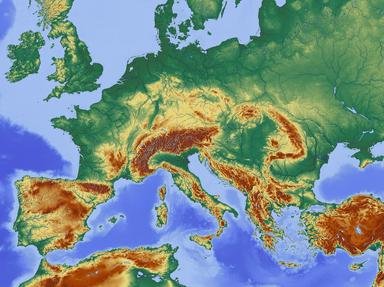Quiz Answer Key and Fun Facts
1. What famous Austrian neurologist, known as the father of psychoanalysis, developed the idea of the id, ego, and superego, and was born in 1856 in what is now Pribor, Czech Republic?
2. Czechia is famous for its beer, and has several beer festivals each year, including one in the city of Plzen, and one in the capital, Prague. Which brand of beer, called "Czechvar" in the United States and Canada, originated in Czechoslovakia, dating back to 1876?
3. In the historical center of Prague sits one of the largest building complexes in Europe, called the Klementinum. The Klementinum is home to the Astronomical Tower, Mirror Chapel, and Baroque Library. Which artist painted the ceiling of the library and a fresco in the chapel?
4. On January 1, 1993, Czechoslovakia split into two independent republics. Alluding in name to a bloodless 1989 revolution against the country's Communist Party, what name is often given to the split of Czechoslovakia into the Czech Republic and Slovakia?
5. The Czech Republic is a very mountainous country, bordered by mountains on three sides. Which Czech mountain range, that got its name from the mining of metals, forms the border between the Czech Republic and Germany to the north?
6. In the 1960s, Czech chemists Otto Wichterle and Drahoslav Lim introduced their revolutionary ophthalmic invention to the world. What was it?
7. Modern-day Czechia encompasses three historic countries/territories: Bohemia, Moravia, and Czech Silesia. Bohemia was a duchy during the Great Moravian Empire, and was later made a kingdom in 1212. Which Czech city, the largest in the country, is the capital of Bohemia?
8. The Czech Republic is well-known for its wealth of talent in sports, particularly ice hockey. A number of Czech players have enjoyed fame in the United States' National Hockey League, but in 1998 Czech men's ice hockey players struck gold for their home country in the Winter Olympics held in which Asian city?
9. Prague is well-known for its bridges, which cross the city's Vltava River. One bridge, constructed in the 1350s, was the only means to cross the river until 1841 and was originally called the "Stone Bridge" or "Prague Bridge". It was renamed in 1870 for the Holy Roman Emperor who reigned during its construction. What is the bridge called today?
10. In the mid-1800s, which German-speaker from the Silesian region of Europe, in what is now the Czech Republic, conducted famous experiments on pea plants, establishing rules of heredity?
Source: Author
kaddarsgirl
This quiz was reviewed by FunTrivia editor
Pagiedamon before going online.
Any errors found in FunTrivia content are routinely corrected through our feedback system.

